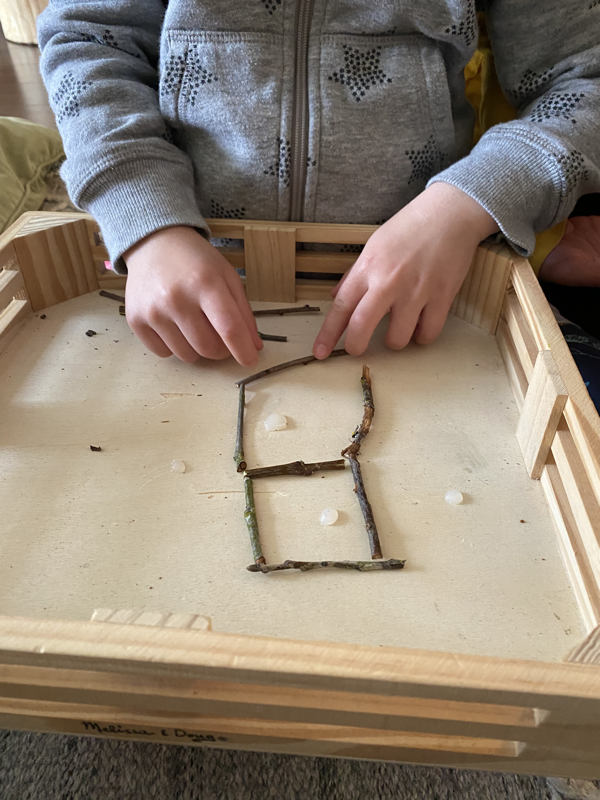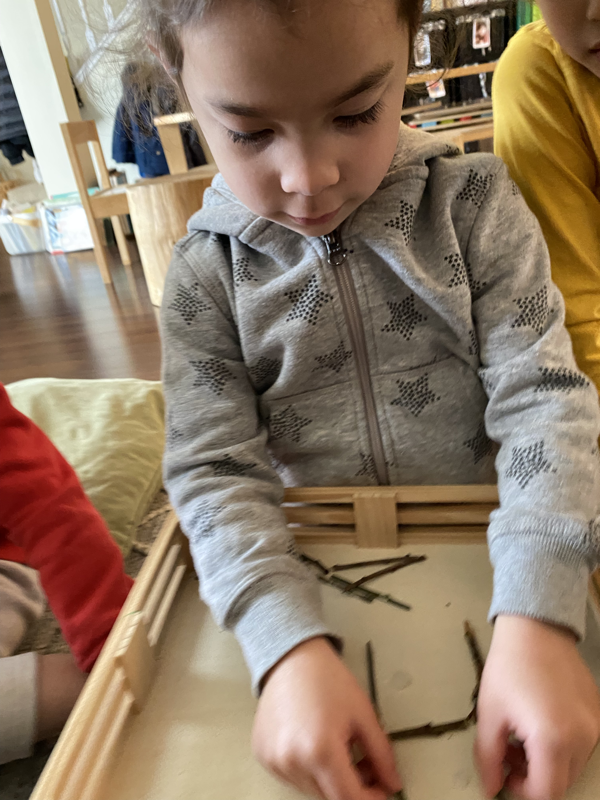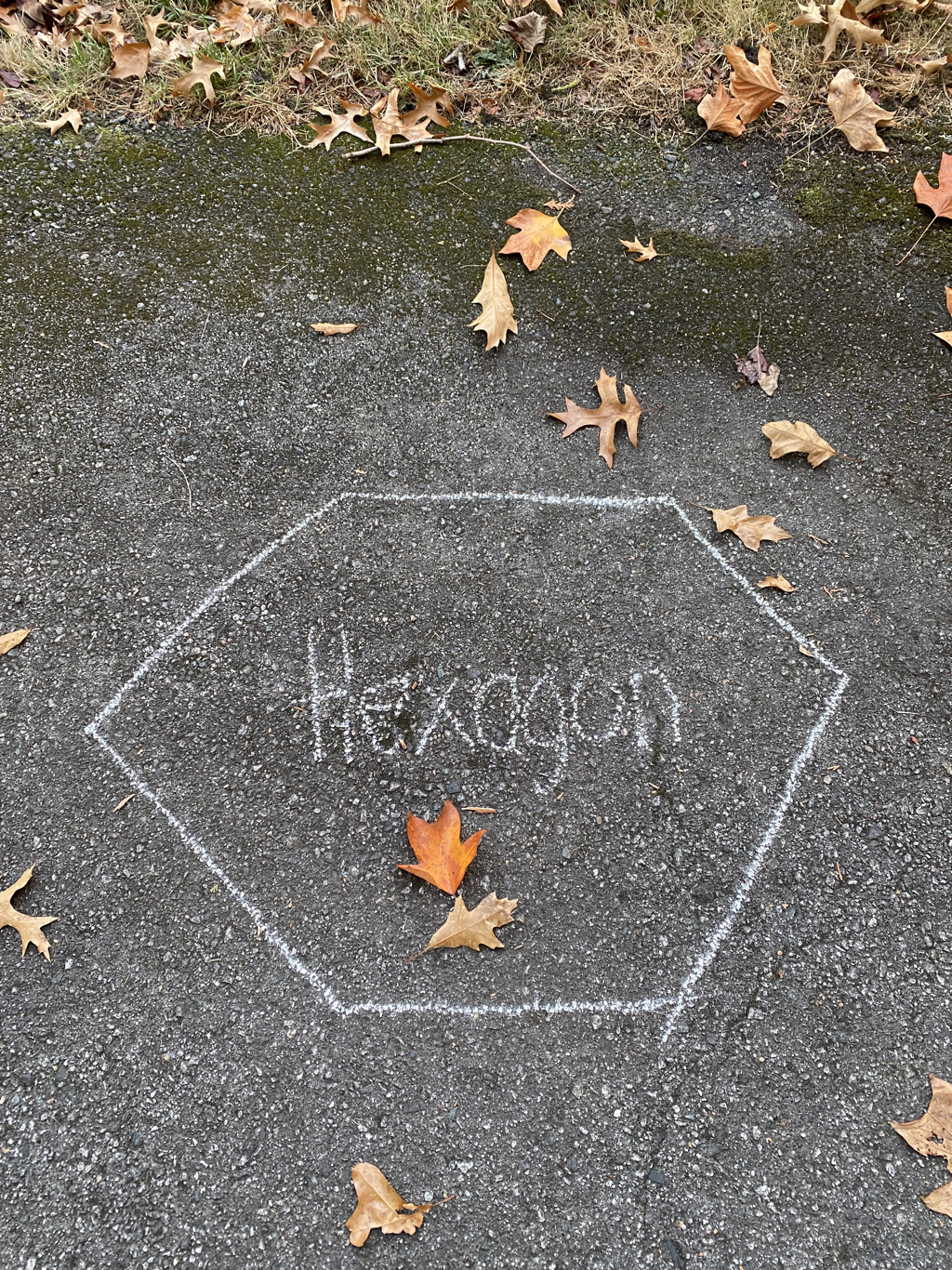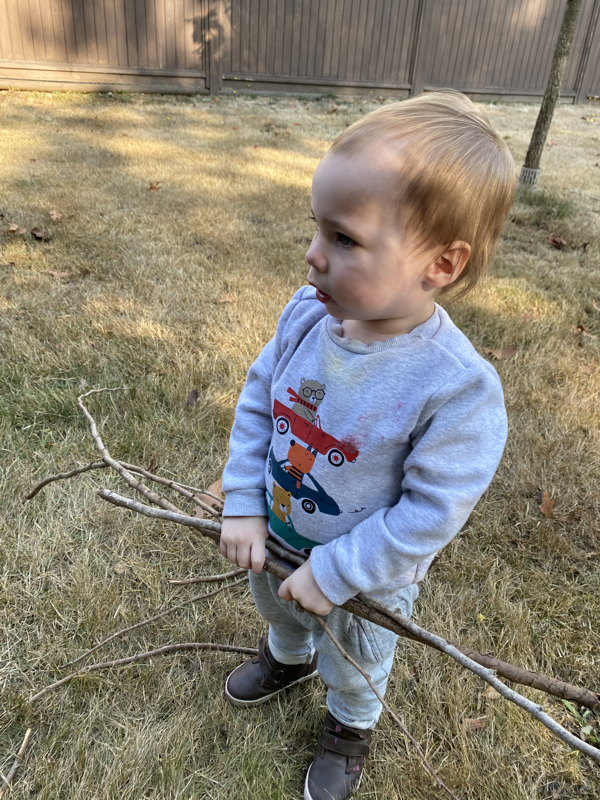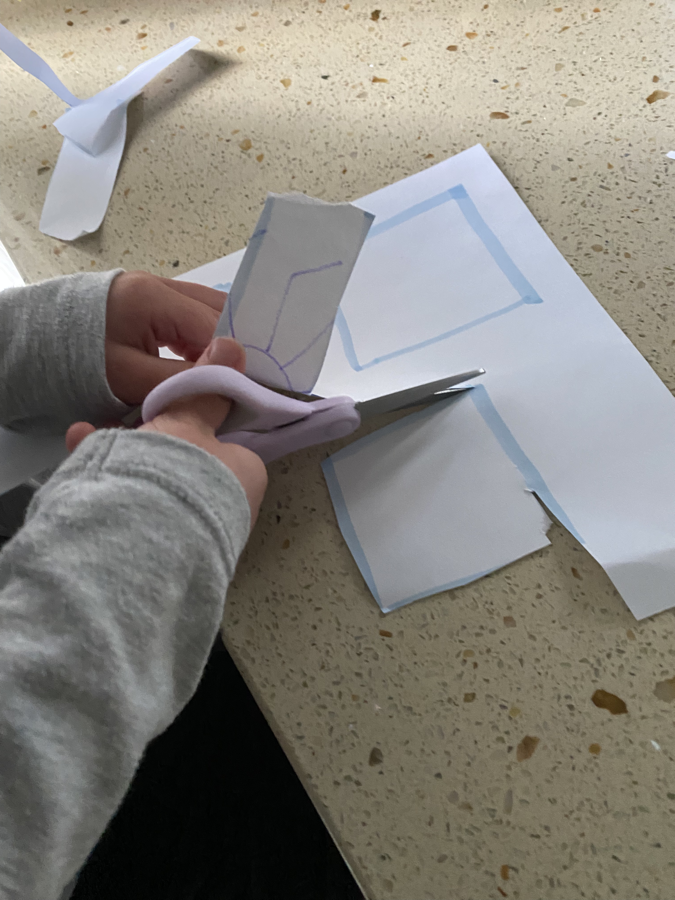|
Listening to children’s familiar understanding on basic shapes such as triangles, squares, and rectangles, as part of our drawings of structures and portraits, we ask ourselves what other favourable shapes can be included to further enrich enrich our drawing. We recognize pentagons and hexagons to be the possible extended two-dimensional polygon shapes. Making connections between cognition and kinaesthetic interdisciplinary provides us with learning opportunities to identify certain attributes of the above shapes. Our drawing incorporates all the graphic elements required for learning to print letters and numbers.
Drawing helps us to develop the visual-spatial skills needed for mathematics. Pattern making is also an important aspect of developing mathematical ideas in us. Introducing technology to be part of our learning experiences in creating stories is another medium to be explored. Felix is observed to be interested in trying out the relationships between his fine motor skills and expressions of straight and curved lines of different length and in different directions. The recognition, based on the number of straight lines forming the shapes, is in line with our growing interest in one-to-one mathematic correspondence recognition. 1,23,4,5,6,7,8,9,10 - Brooks Pushing the twigs through into the log learning experience allows Brooks to make an association between the objects that he touches to count each one in a sequence. We extend our learning to the backfield by drawing the hexagons and pentagons around the loop with the name written inside. We created a game to stand inside the specific shape that is called out. The children start by counting the number of lines to help them determine if they are inside the right shape. However, Arjun shows his unique way of figuring out whether he is inside the right shape or not. He carefully pays attention to the letters written inside the shape and phonetically associates with the letter that he sees. This supports the idea that each child has their own way of learning, associating, and making meaning. This awareness of letter-sound relationships involves "sounding out" words the way they are written or writing words the way they sound. By singing songs such as "Alphabet Song" and reciting rhymes, we build understanding on the names of letters. Afterward, we acquire letter shapes by working with blocks, alphabetic puzzles, etc. Providing leaning opportunities to explore shapes by our riding vehicles enables us to learn directions, too. Our everyday actions build our social relationships. language, and communication.
Kindest, Children & Friends.
0 Comments
Leave a Reply. |
No part of this publication may be reproduced, distributed, or transmitted in any form or by any means, including photocopying, recording or any other electronic or mechanical methods, without the prior written permission of the publisher.
Archives
July 2024
|
